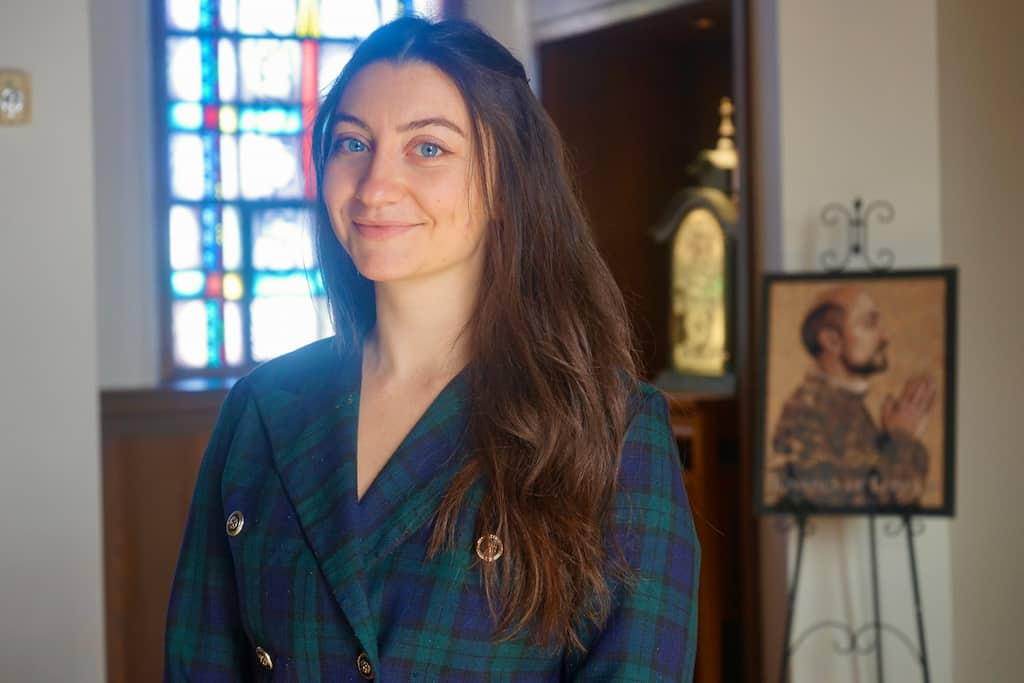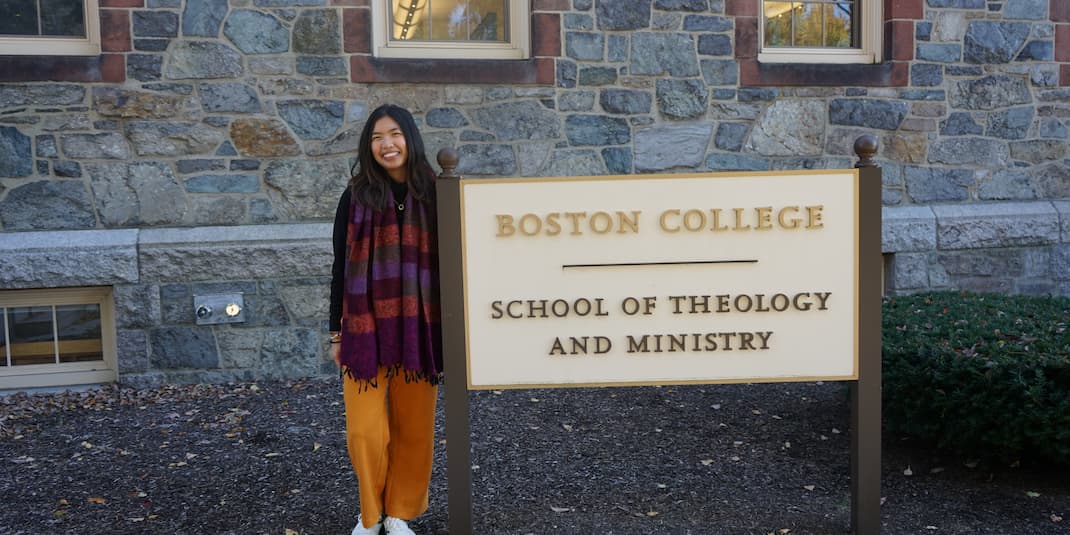
What can one do with a theology degree? I get asked this question often, and it’s a difficult one because there’s no straightforward answer. You can do anything! Maybe you have a background in nursing, choral conducting, marine biology, corporate banking, ballet,, or theoretical physics, or maybe you want to go be a person who does those things. In fact, I’ve met people from all these walks of life during my own theological studies. I’ve heard more than one peer say they’ve always known they want to be a lawyer and see the importance of studying theology as a means of formation, preparing them to uncover what matters, how to give voice to truth, and to study justice in a critical way – three things that I would hope many if not all of us bring to our work regardless of the industry.
After changing my major nearly every week in my first year of undergrad, I found myself in a theology course that changed my life – changed me. In real time, it was bridging the seeming gap between religious education and spiritual experience that seemed disparate in my own academic and faith formation. It was awe-inspiring to me that I could study something that challenged me both intellectually and spiritually, that dared me to discern who I am, what I believe, and how to live well. In this way, it was an invitation to imagination.
“ The more we study God, the more we feel this call to the imaginative – to conjure an empathetic dreamscape of what could be, so as to be more conscious, curious, and creative ministers. ”
The more we study God, the more we feel this call to the imaginative – to conjure an empathetic dreamscape of what could be, so as to be more conscious, curious, and creative ministers. In his book Sense of the Possible: An Introduction to Theology and Imagination, CSTM Professor, L. Callid Keefe-Perry explains, “We become better connected to people and ideas, recognizing that empathy and interpretation both have their roots in imagination.”
In Jesuit education, we talk about engaging “the contemplative imagination”, or what Walter Burghardt, S.J. calls, “the long loving look at the real”. It’s a creative and prayerful practice of becoming that asks us to let reality and our experience of it generate expansive pathways of attainable, though perhaps unprecedented, possibilities. Often we employ the practice when reading Scripture, and it helps us to live into the Biblical scenes, to embody the sensory experiences of its characters, to connect us communally across the time and space God transcends.
Over the years, theology has asked me to imagine alongside history, music, literature, science, art, modern and ancient languages, politics, and pop culture in critical ways. It’s given me friends and mentors from all over the globe, and even taken me to new parts of the world too. The more I understand and expand my own worldview, the richer my studies and their fruits become. I’ve written papers on the intersections of Hildegard of Bingen and Footloose, and Hans Urs von Balthasar and Kermit the Frog. I’ve given presentations on everything from monastic life to sunscreen. Time and again I’ve tested the limits of what this discipline has to teach me, and while I’ve yet to write a theology of Mean Girls, I continue to be reminded that “the limit does not exist”.
21 years of Catholic education deep and just shy of three degrees in theology, I’m still uncovering all the outcomes and opportunities theological study has to offer. What I’m met with time after time, is that you can’t put theology in a box because you can’t put God in a box, and what a gift it is to be formed in a community which chooses to imagine the unimaginable love of God.




.jpg)
.png)